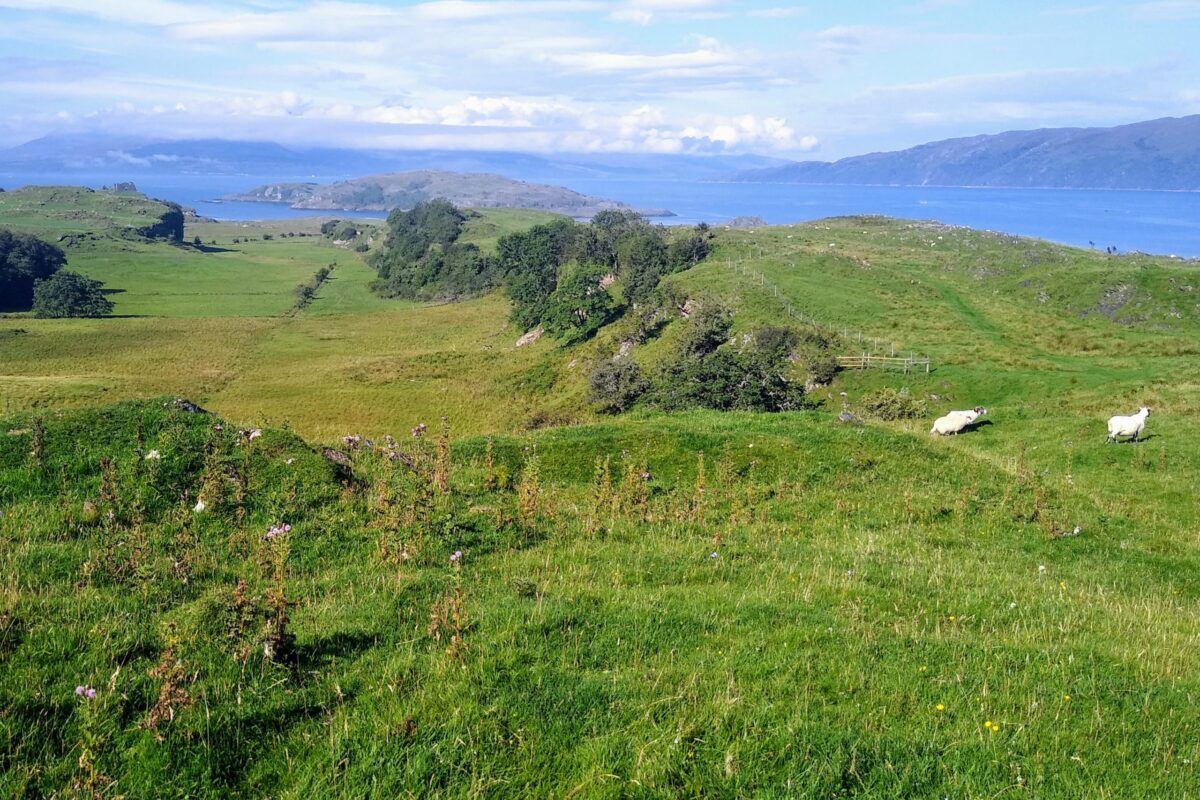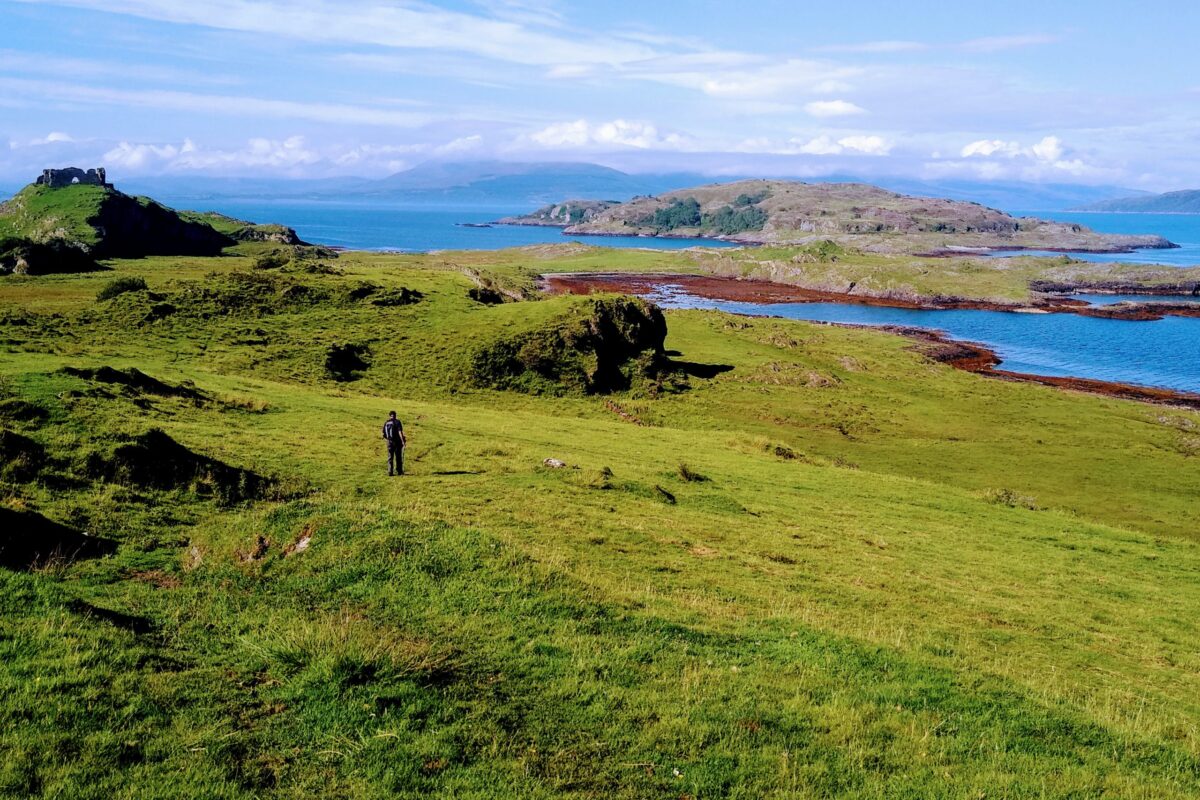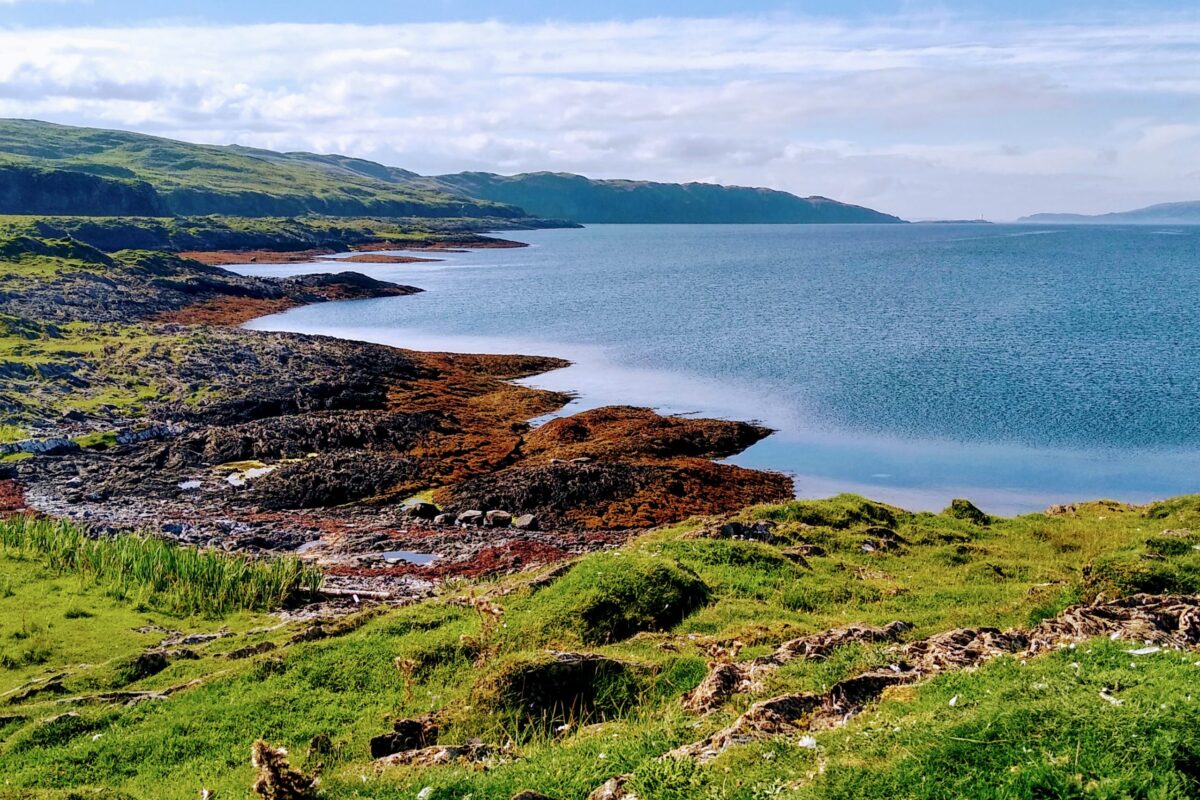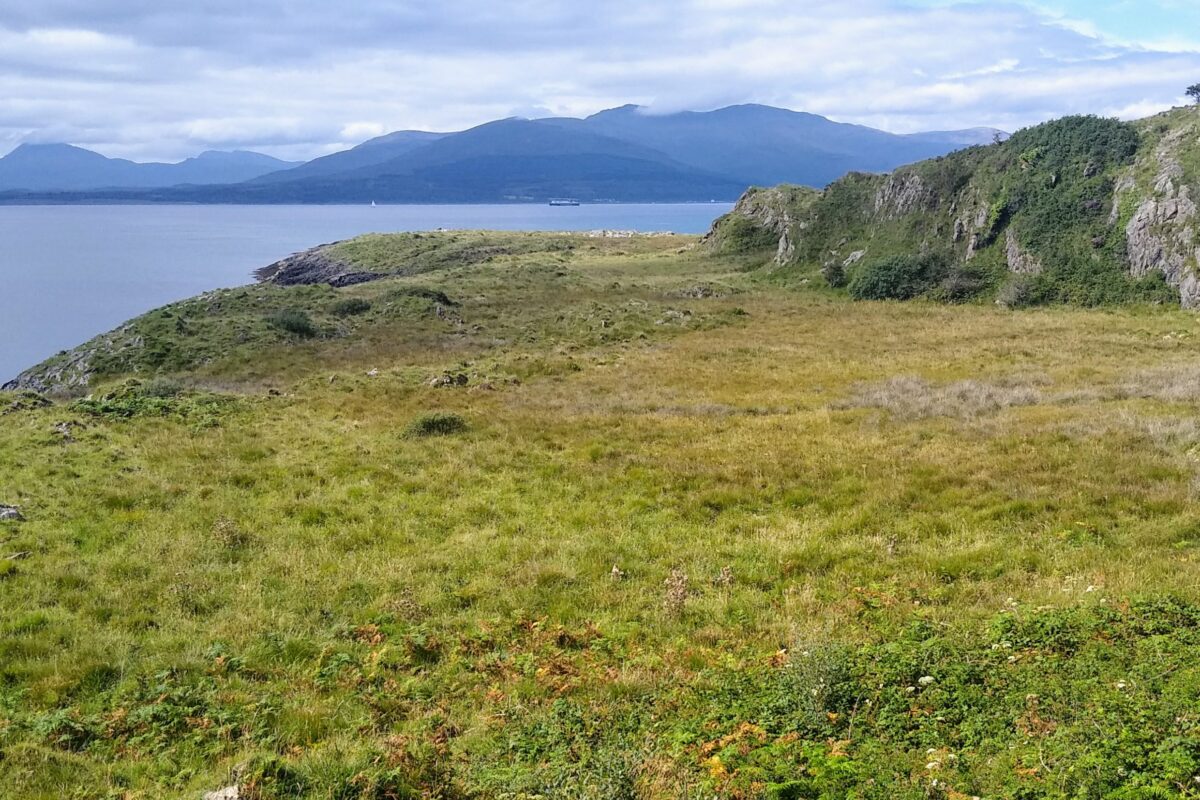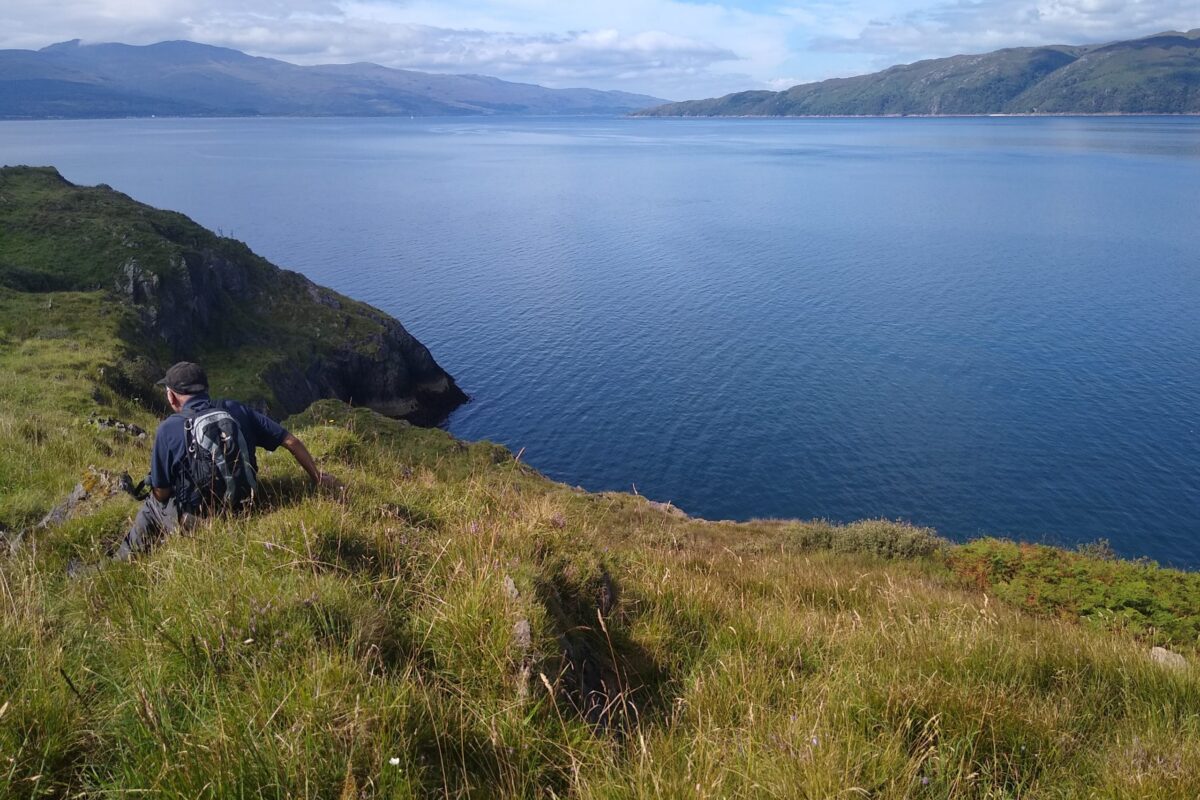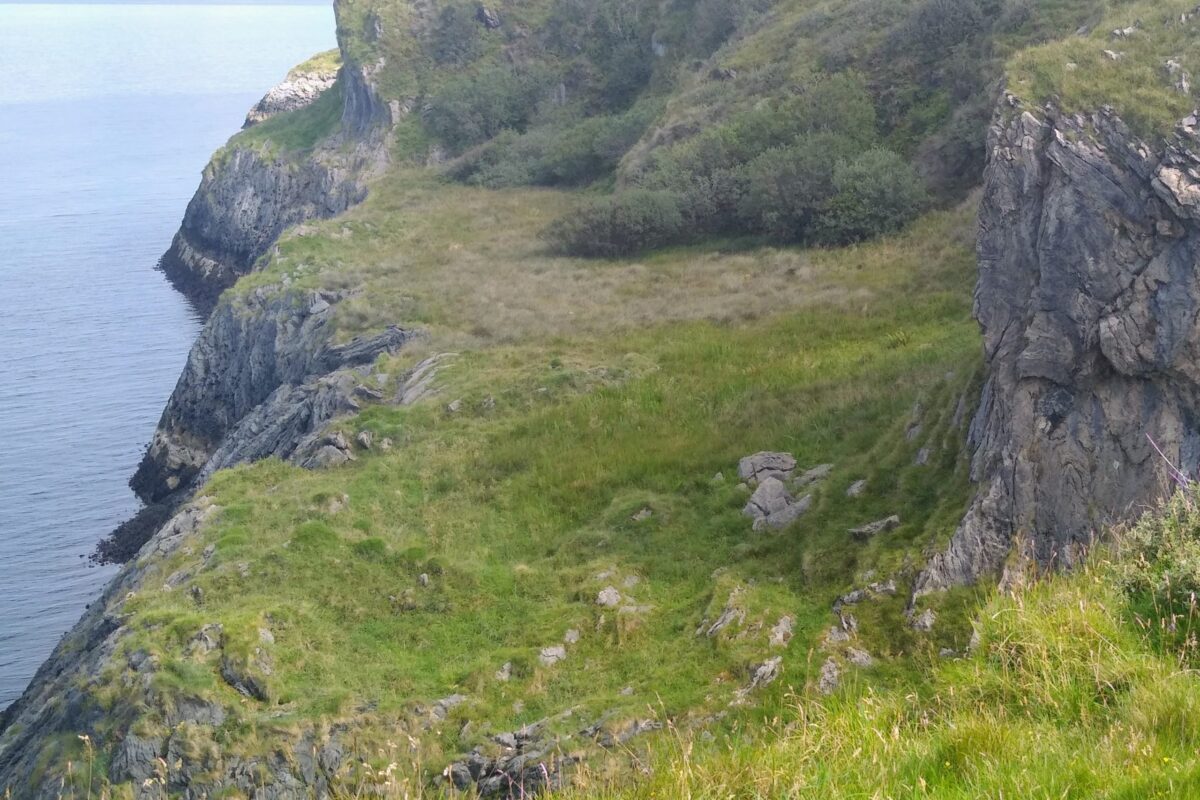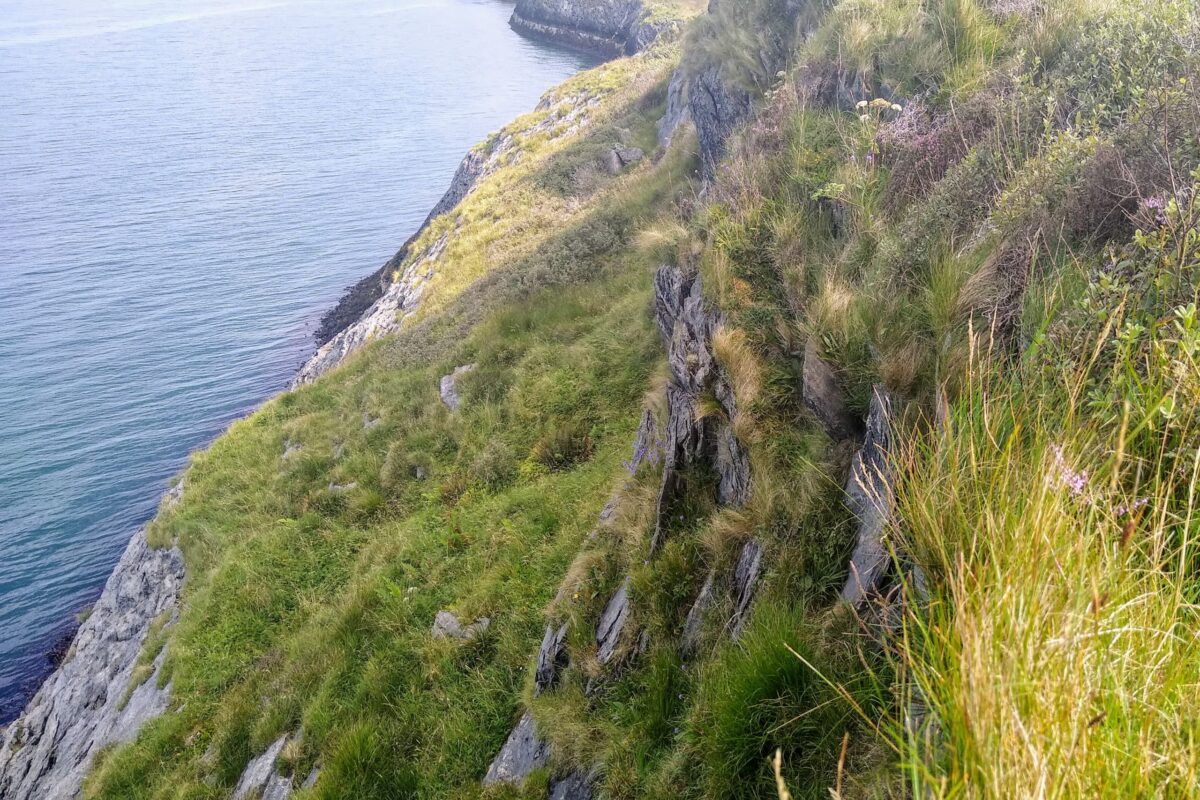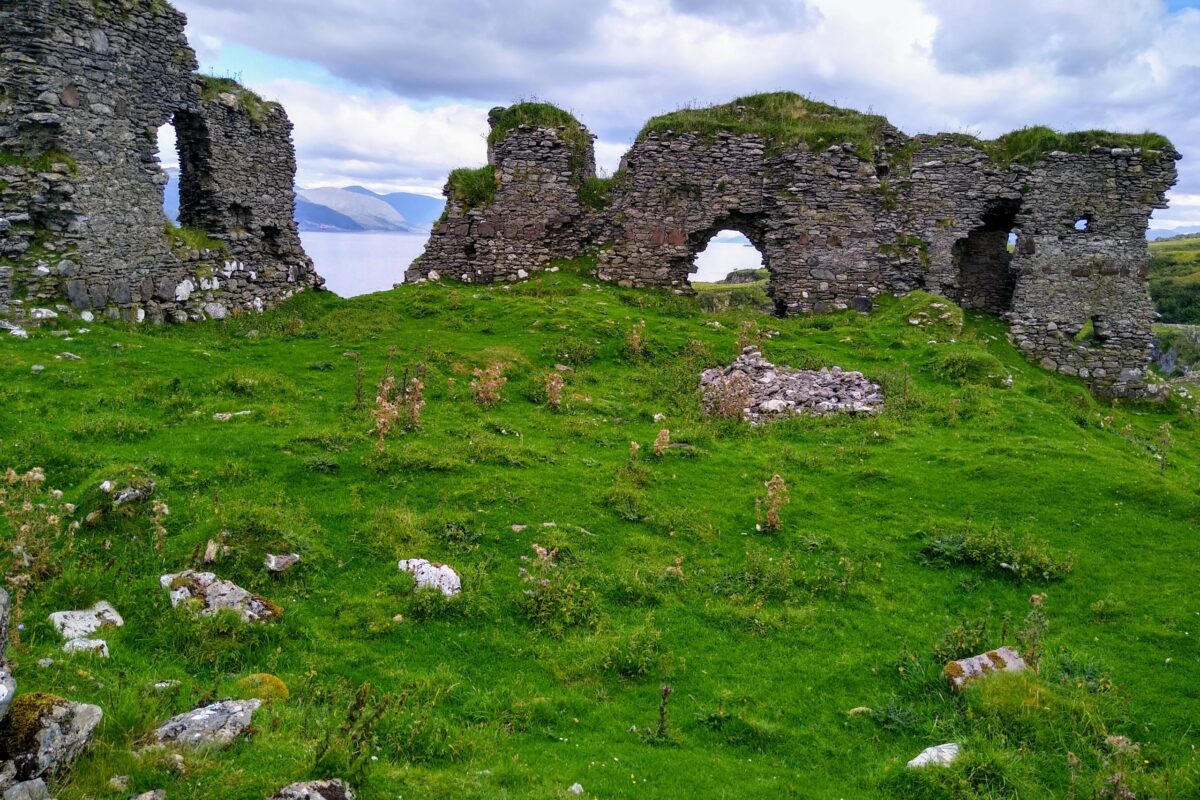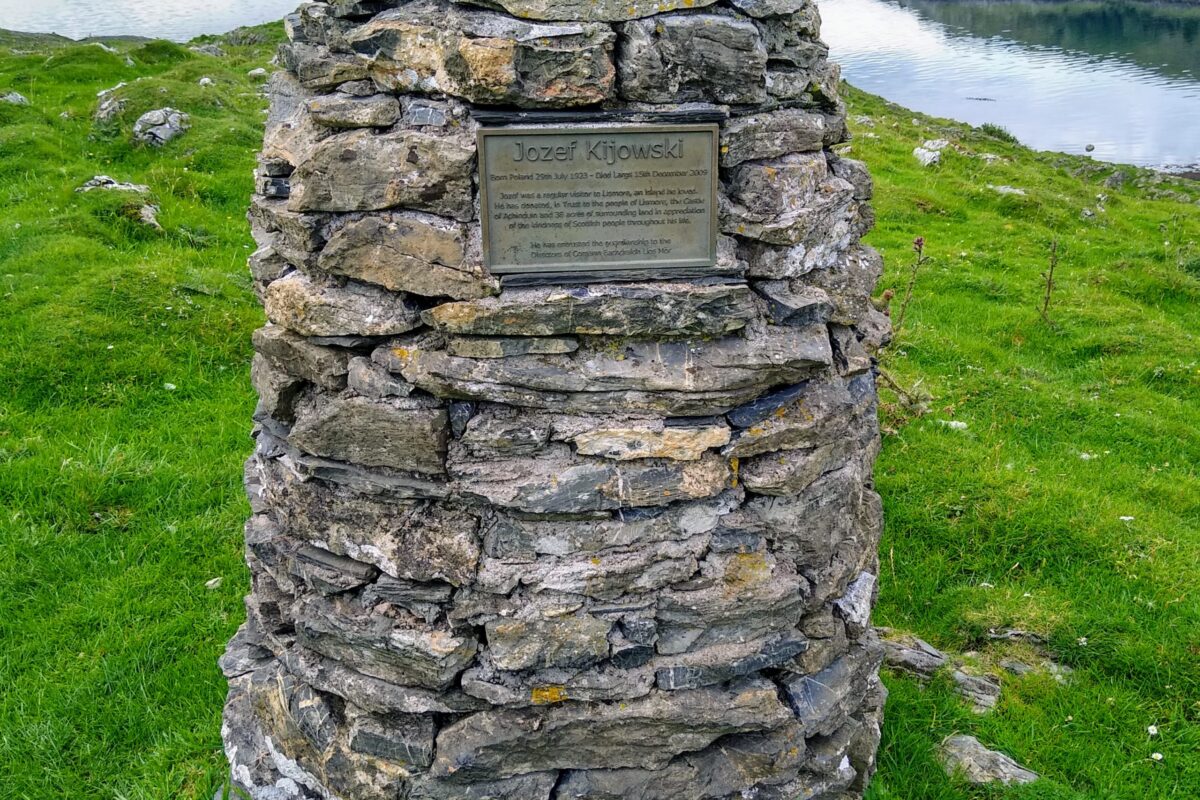| Achinduin—Bernera | Difficult | 2:20 | 4.19 mi |
NOTE
The island of Bernera lies off the south west of Lismore but is accessible at the low tide for a few hours. Consulting tide times is essential.
1. THE ACHINDUIN ROAD
You can park on the Achinduin Road before you get to the houses and beside a gate which leads into fields and down to the shore (about a mile). You will eventually pass beneath the elevated Achinduin Castle on you left and over a seaweed strewn wetland. We crossed two hours before low water of a spring tide and the lower the tide the better as you need to negotiate a slippery carpet of seaweed and stones. Start up the island’s raised beach on the the east (Lismore) side. It is easy at first, but you may have to struggle with brambles and nettles, and cling to anything available.
2. THE Island of Bernera
The island is grazed, and neat sheep paths are invaluable for keeping places accessible. Cattle occasionally wander over when the tide is low but soon return.
The first beach has very flat stones and someone, a yachtee camper perhaps, has strung up a nylon washing line. Seems very domestic. And a colonising act. This is a sacred island or was to the early Christians. Perhaps they do not know of St Columba’s foretellings.
About two-thirds of the way along we were forced up to the higher ground, in search of the remains of the sixth century chapel Moluag was said to have built and where Columba may have preached as well. We are told that the original legendary yew tree, under which up to a thousand came to hear them, was cut down by Campbell of Lochnell to provide a staircase for Lochnell Castle. He was punished and so were others involved, innocent Liosaich I presume, by repeated tragedies, yet the staircase survived more than one fire in his castle. It was thought the yew wood was used for joinery, maybe bow making. More importantly, Columba had made it sacred, foretelling tragedies befalling any who destroyed it. Columba was on Iona and his forays into Moluag’s bishopric were said to stop at Bernera. Others say he visited Moluag via Port-na-Mor-laoch from Kingairloch. His foretellings certainly travelled.
Bernera is said to be the only place where yew trees occur in Lismore. And there are at least still two on the east coast of the island, and another smaller tree on a steep cliff. These trees are likely to have sprouted from the arils of the ancient Yew tree that was already very old and large when Moluag built his Chapel.
Cross over to the west raised beach and when it becomes too steep continue back along the cliff and down to the crossing.
3. ACHINDUIN FARM
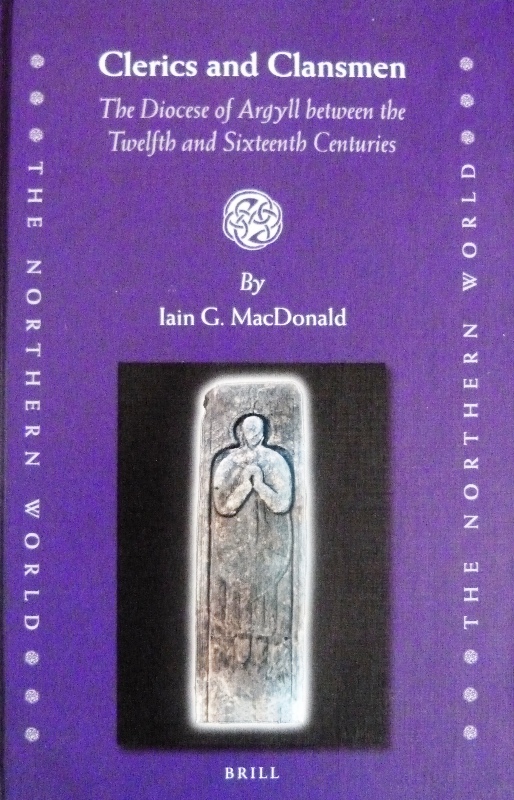
From Bernera head across to Achinduin Castle built by the Clan MacDougall in the 13th century. The then clan leader may have been responsible for bringing the Bishopric of Argyll to Lismore, making the island the seat of Christianity long before Iona was on the ecclesiastic map. It is also known as the Bishops’ Palace as it is thought to have been a bishops’ residence at times. Dr Iain MacDonald of Glasgow University gave a very interesting talk about the importance the Medieval Church in Lismore at the heritage centre in 2013. His book “Clerics and Clansmen” traces the later medieval bishops of Argyll and the importance of Lismore as the centre of Christianity between the 12th and the 16th centuries.
Near the castle a Polish man, Jozef Kijowski, is memorialised. The lovely cairn is the work of Jim MacCormick of Baligarve, an excellent example of the stoneworking skills still carried on in Lismore. Josef was a frequent visitor and a lover of Lismore and his entitlement to this fine position comes from his having bought the castle and 38 acres of the surrounding land from the MacColl family and, when he died, returning it to the people of Lismore, entrusting its guardianship to the Comann Eachdraidh Lios Mòr.
To return to the start continue walking east until you reach a road signposted to the Castle. Turn left and this will take you between the houses, almost all MacColl family homes, bar one, and very soon you are on the main Achinduin road and the start.

